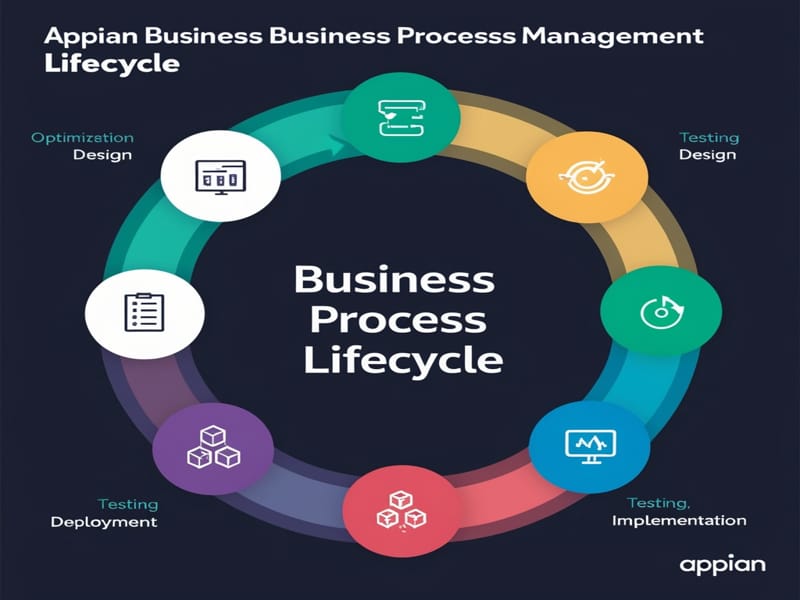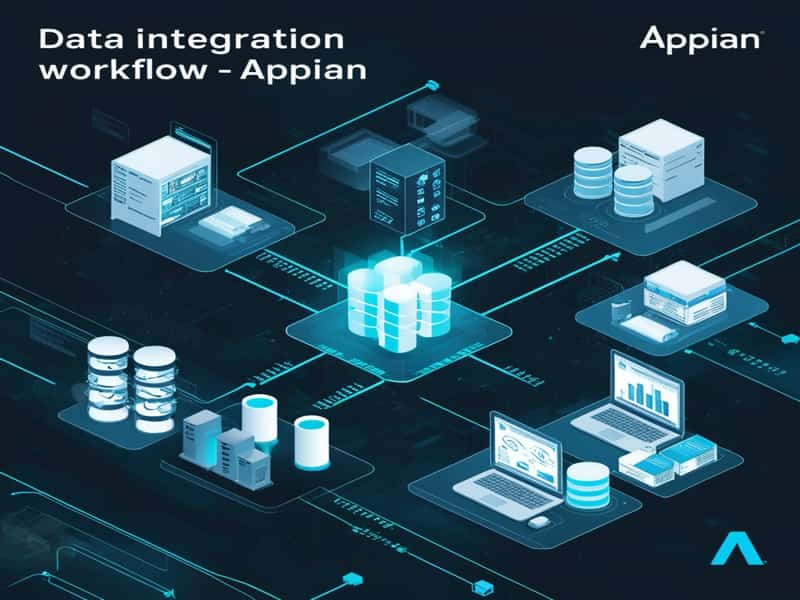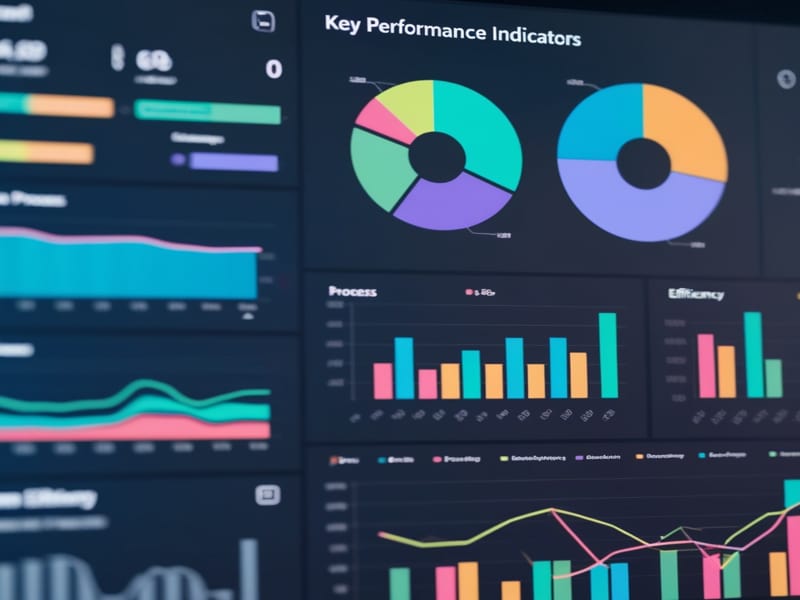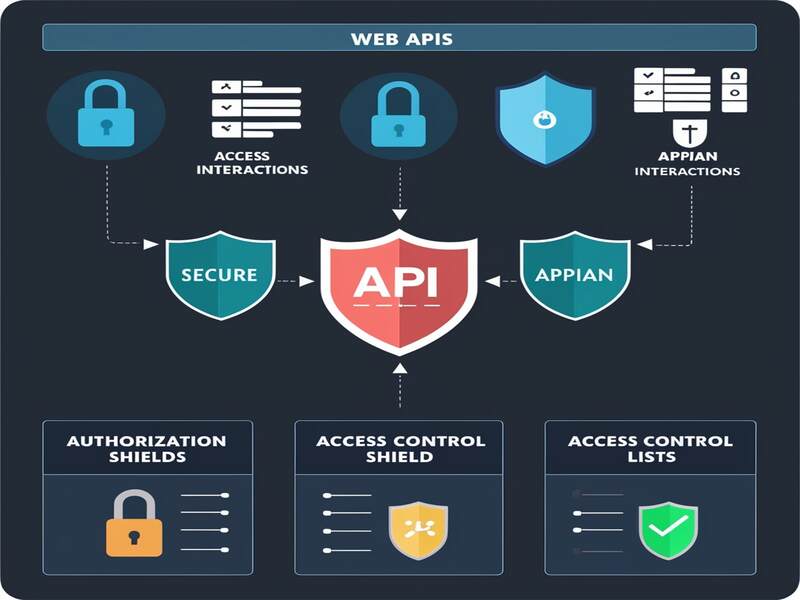Appian Tutorial for Beginners
The introduction covers the significance of understanding platform architecture, naming conventions, database queries, debugging, application errors, and an Appain Overview.
The Appian integration tutorial introduces tools and approaches for effectively debugging application errors.
Since its creation, the Appian demo shows that it has quickly earned recognition as an industry-leading platform for process automation, low-code automation, and case management.
The Appian tutorial for beginners is also helpful. It covers topics with Appain examples. Gartner recently published research demonstrating this fact, noting that Appian has no competition in these areas.
Appian BPM jobs are in high demand across all fields, and those possessing relevant expertise tend to command higher wages for these positions.

What is Appian?
Appian is an industry-leading low-code automation tool with numerous features and functionalities for businesses in the BPM domain.
Appian BPM platform offers various tools and features for business process management, including modelling, automation, monitoring, and optimizing processes.
It provides a visual interface for modelling business processes using BPM standards, allowing accessible communication and understanding with stakeholders.
Appian provides organisations with an efficient low-code development platform. It offers various Appian Workflow tools and features to facilitate the creation of custom apps quickly and cost-effectively.
Visual BPM provides a visual interface for modelling business processes. Appian or BPM tutorials help with standards, enabling process designers to construct understandable models easily.
Appian tool Uses
A low-code development platform offering various tools and features to help organisations build and deploy custom applications quickly and efficiently. There is not much Appian coding is required.
Appian UI provides a visual interface for modelling business processes using the BPM standard, allowing process designers to create easy-to-understand models.
This also includes tools for creating custom forms and Appian user interfaces, enabling organisations to integrate with other systems and data sources.
It manages business rules and decisions, automating complex decision-making processes and reducing errors.
Allows collaboration and communication between team members, reducing the need for email tools.
Appian Process Mining is a feature within the Appian platform that provides tools for analyzing and optimizing business processes.
Appian Features
A robust Appian low code no code automation platform offers digital transformation processes and models unavailable on mobile devices.
Furthermore, the low-code automation used in Appian’s mobile product enables users to perform quick task in Appian from any location, which is an advantage in this low-code automation sector.
Appian BPM Suite is an extensive low-code development platform featuring various organizational features, including automation, case management, digital process automation, integration with other systems, and collaboration.
Sites in Appian are features that can organize and present content, tasks, and applications within a user-friendly interface.
This ensures that your investment in Appian is future-proof and can grow with your organization.

Appian Training

Appian Benefits
Appian benefits BPM notation has brought significant power and advantages to organizations through improved collaboration and communication, more efficient process management systems, enhanced employee motivation and performance, and overall organizational enhancement.
Using BPM notation, organisations can streamline processes while improving efficiency for overall organisational enhancement.
There are many benefits, including the tutorial. We also know the job descriptions, such as the Appian developer job description.
BPM has proven invaluable to organisations, improving communication and collaboration while creating more efficient process management systems.
Organisations can leverage BPM notation to streamline processes and increase efficiency. Process model best practices in Appian boost overall organisational performance.
Its adaptability ensures that it can be tailored to meet the unique needs of any organisations, providing reassurance about its applicability.

Appian BPM or BPM Appian
The Appian BPM tool is meticulously designed with the user in mind. It provides a low-code platform that is powerful and remarkably easy to use.
It allows users to build apps from scratch using a variety of design objects, making application development straightforward and user-friendly. Users may need to download mobile applications from app stores using Appian.
These components allow users to easily apply Appian installation, create different objects, update data, generate reports, and maintain data records.
Once BPM was defined as the methodology behind these aspects of process management, products like Appian and PEGA were developed to integrate all process aspects.
These products connect an organization’s databases, software applications, and systems quickly and socially, allowing social collaboration and creating a centralized system to control all process aspects.
Appian BPM Tutorial covers the technology introduced to meet client requirements on one platform by providing numerous design objects for building applications that users can utilize when building them.
BPM tool is a low-code platform that empowers users to build applications from scratch using folder hierarchy, gateways, groups and security, custom data types, stores, query rules, document management systems, and advanced sales components.
Users can use these components to create objects while updating data records, generating reports from them as needed, or maintaining reports about previous interactions.
Appian Low-Code Application Development Tool
Appian stands out among low-code application development tools as a leader in Business Process Management (BPM).
Appian is a low-code technology that enables users to build Appian tasks and interfaces without writing all the Appian code that makes up information systems with an Appian code language.
It is similar to HTML, which uses hardcoded templates for sending emails from banks and public organisations.

Appian provides users with configurations and components, including drag-and-drop, text fields, and multiple-drop areas, that enable users to build interfaces by simply dragging and dropping components onto a work area.
Some resources from Appian YouTube & Appian Media YouTube. Which automatically configures parameters with appropriate Appain values for user creation.
Appian is a low-code technology that enables users to build interfaces without writing complete information code. With its flexible approach to managing and configuring code, Appian is an excellent solution for businesses seeking to fulfil customer demands.
Appian’s Omnichannel Integration & Low-Code Automation
Appian is a low-code development platform that enables businesses to develop custom Appian apps quickly and cost-effectively.
It also supports omnichannel integration, allowing enterprises to synchronize data across channels, devices, and systems.
Appian RPA (Robotic Process Automation) or RPA Appian is a feature within the Appian platform that enables organisations to automate repetitive, rule-based tasks using software robots. RPA concepts covered in Appian RPA Tutorial

Appian Online Training

Low-Code App Generation
Tempo is a dedicated tab in Appian design that streamlines the process of managing credentials and building applications.
It offers a user-friendly interface, allowing users to quickly manage contacts and check balances. Integrated tools such as Teams and Zoom enable quick app development.
To ensure secure authentication, Tempo requires users to provide PIN and bank account details, which are then matched with backend process databases for verification. This results in a seamless and efficient Appian site user experience.
Effective App Development with Interfaces, Data Types& Resources
App Development with Interfaces highlights the importance of certain Appian platform features in promoting user-friendliness and accessibility for Appian development projects.
The features in question are feeds, groups, data objects, and user registration. The Appian community or Community appian serves as a valuable resource for gaining insights into the platform, offering practical materials, instructional videos, and success stories from clients.
Integrating Docs, Feeds & Security
Appian’s data store and knowledge Centre seamlessly integrate external databases and internal tables, ensuring consistent data storage across various applications.
This integration in Appian is achieved by creating logical expression rules or interfaces, which offer two essential capabilities for secure and efficient data storage.
Expression rules have gained popularity as they simplify data configuration and logical expression creation for Appian developers, making it easier for them to retrieve data or construct expressions. By utilizing Appian’s data store and knowledge Centre, developers can create applications that are well-equipped to handle complex data storage and retrieval needs, which is helpful for writing the Appian associate developer exam.
Achieving Automation Success with Feeds, Process Models & Web APIs
Appian offers dynamic information feeds to banking, insurance, and service businesses, providing automated notifications and reminders. Its user-friendly interface, process model, and Web API integrations make it an attractive option for developing applications.
Appian’s process model is critical in Web API integrations, enabling automatic actions and data exchange between systems.
Developers and users must understand Appian’s process model to use Web API integrations effectively. Testing involves creating small objects for multiple scenarios and deploying them to the testing environment for regression of Appian automated testing.
The Appian POC aims to test specific features or capabilities of Appian in a controlled environment to determine if they meet the business requirements and solve the intended problems.
Its process model and Web API integrations provide a powerful toolset for banking, insurance, and service businesses.

Appian Disaster Recovery (Appian DR) is a service provided by Appian, a low-code automation software company, to help businesses protect their applications and data during a disaster.
The service provides a comprehensive disaster recovery solution that enables businesses to recover their applications and data quickly during an unexpected disruption. Appian Disaster Recovery includes automatic backups, real-time replication, and failover capabilities to ensure business continuity.
Configuring Appian & Understanding APN
Appian Programming Language provides developers with pre-built objects for developing applications in Appian.
These pre-built groups and objects ensure security over their application’s front, back, data movement and storage needs.
Administrators, HR specialists, and data entry operators can access the application through all users. Groups and prefixes act as barriers restricting unauthorised entry, like walls and fences at home.
APN contains two categories of folders for application creation: a model folder for interfaces and a rule-like document folder for advanced developer’s We can learn about these from the Appian developer tutorial.
Appian Data Stores, Mappings, and Security
An Appian data store is a powerful feature that enables developers to create multiple relationships among tables within an application, allowing for efficient data management. In addition, there are two critical Appian groups within all users and system administrators.
Security arrangements and permission levels are critical considerations for both groups. All users and system administrators have different levels of access and permissions within the application. By understanding these permissions, developers can ensure that their applications are secure and that users have the appropriate level of access.
For instance, system administrators typically have higher access and permissions, allowing them to manage the application and its settings. On the other hand, all users have more limited access and permissions, allowing them to use the application but not modify its settings.
Appian Integrity &Access
Appian’s data store and knowledge center are essential for seamless integration between external databases and internal tables and for ensuring that data storage across applications remains consistent and safe.
Developers can maintain an effective data storage system by setting logical expression rules or creating interfaces to keep their system efficient and secure. We can learn all about Integrity and Access from the Appian tutorial.
Interfaces, Custom Data Types &Community Resources
Community Resources explores how Appian provides an environment for creating applications using Java and Appian as languages to build applications. Feed, groups, and data objects are crucial in providing accessibility and user-friendliness to application functions in Appian and Appian expression rules.
It also provides documentation for plug-in unrelated to the core platform so users may access support directly.
Appian offers its user community an invaluable forum to exchange knowledge and experiences on all functions in Appian and to gain a fuller grasp of its platform.
Appian offers documentation for plug-in unrelated to the platform and allows users to request support from the support team.
The Appian community provides a platform for users to share knowledge and experiences, providing valuable resources for learning and understanding the platform.
Appian App Lifecycle: Creation, Configuration & Management
Application lifecycles are critical parts of software development processes; their creation, configuration and closure involve various stages, such as creating or altering applications using reusable components like content, interfaces or integrations.
These projects are created for specific uses, like banking. Applications should be developed for every aspect of a business process to optimise operational efficiencies.

To create an efficient application life cycle, the application itself may be constructed within itself to accommodate multiple processes.
Navigating the Application Lifecycle is a pivotal component of software development processes, covering applications’ creation, configuration and closure.
Create and modify applications using reusable components like content, interfaces and integrations to develop them.
Appian Environments: Plugins, Mail Servers & Dev Tools
Various plug-ins are available through app markets or intelligent services for multiple functions.
Appian supports the MLM Outlook mailbox as a default mailbox while using protocols like SMT/STP as mail protocols; developers typically create multiple Appian environments – one for development testing production environments.
Layout Components & Properties of Appian
Appian provides an intuitive environment to help create apps with various layouts to meet varying proficiency levels.
Understanding layout rules and selecting an optimal Appian UI design for each user are integral to developing secure, well-made applications. To discover layout properties, open Expression mode and select it.
Section layouts in APN consist of various layouts, fields, or user input. By gaining experience and practising daily, developers can ensure their applications are secure, efficient, and accessible for all users.
It can improve user experience and engagement as developers become more confident in writing code correctly and adhering to rules and regulations.
Section layouts can accommodate virtually all input forms, and understanding validations and groups is integral to successful code writing.
Expression Mode, Components & Properties
Expression mode introduces users to various layouts and their hierarchy, allowing them to design interfaces more efficiently. Users receive three-column layouts with other fields available so they may quickly select items.
They then create an appealing interface with multiple columns containing text, paragraphs, integers, decimals, and an encrypted text file uploading signature barcode-rich text tag information.

Appian Course Price


Vanitha
Author